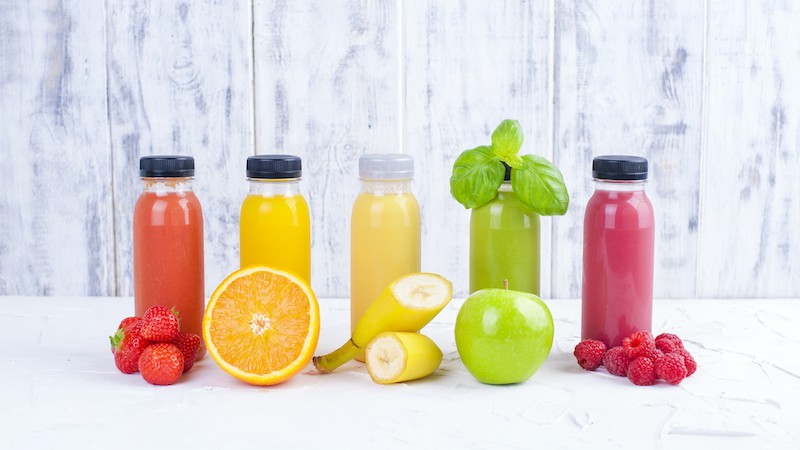While a drink loaded with fruits and vegetables sounds righteous in theory, is juice really healthy? Well, yes and no. Writer Jennifer Benjamin talks to an expert to learn how to choose and make healthy juices, from fruits and veggies.
“Juices can be part of a healthy diet, but they are not a replacement for whole fruits and veggies, especially because you’re not getting the fiber,” explains Dana Angela White, RD, author of “Healthy, Quick and Easy Juicing.”
“That being said, you’re still getting the nutrients and the hydration – preferably by making your own juices or buying those with the simplest ingredients.”
So, what are the healthiest juices? We asked nutritionists how to determine if your beverage has the right benefits.
Choose the healthy juices
1. Look at the label.

Just because that drink says “healthy” on the label doesn’t mean it’s actually good for you. Plus, many store-bought drinks contain ingredients that negate all that goodness you’re hoping for.
The other thing to watch out for: added sugars. Many brands load on the sweetness to compensate for all the “greenness.” Finally, pay attention to portions. White points out that while it may look like a small bottle, often there are two or more servings in there.
2. Go cold.
If you want to ensure your juice is clean and mean, opt for cold-pressed juices when you can. “Cold-pressed juices are often made in what is called a slow-masticating juicer that has low rpm [revolutions per minute] and does not produce heat, which helps the juice to retain its nutritional value,” explains Megan Roosevelt, RDN, a Los Angeles-based registered dietitian nutritionist and author of “The 5-Day Juicing Diet.”
3. Pick powerful ingredients.
“Ingredients like turmeric fight inflammation. Ginger is an antioxidant that is beneficial for digestion. There are so many ways to mix up your juices and reap the benefits of these superfoods,” says White.
Related: 6 health benefits of cranberries
While fruits are certainly full of good-for-you vitamins, aim to make your juices more veggie-based. Veggies like beets and carrots are already on the sweet side. Fruits like pineapple and apples can cut the “green” flavor of your juices.
4. Stick with the season.
Whether we’re talking juices, salads or bowls, eating locally and seasonally is always the preferred way to go. “Your juices will taste far better and be more flavorful if your fruits and veggies are in season and at their peak,” says White. “For example, citrus and pineapple are always great in the cooler months, while watermelon is delicious and refreshing in the summer.” Check to see what’s in season and then plan your juice menu accordingly.
5. Don’t detox!
We all know about the dark underbelly in the juicing world: those all-or-nothing detox diets where you drink nothing but juice for several days. Not only is this unhealthy, but you don’t need them.
“Juices are not a meal replacement, nor are they a replacement for whole fruits and vegetables. It’s a supplement, like a vitamin, [to what you’re already eating],” explains White. Plus, actual fruits and veggies are already body detoxifiers in their natural fiber-full form, so skimming it down to a juice and drinking only that for days on end isn’t only useless, it’s torturous. Clean juices, with the right nutrient-dense ingredients, can be a great addition to your diet, but they should never be the basis of it.
Real Simple magazine provides smart, realistic solutions to everyday challenges. Online at www.realsimple.com.
© 2022 Meredith Corporation. Distributed by Tribune Content Agency, LLC.
